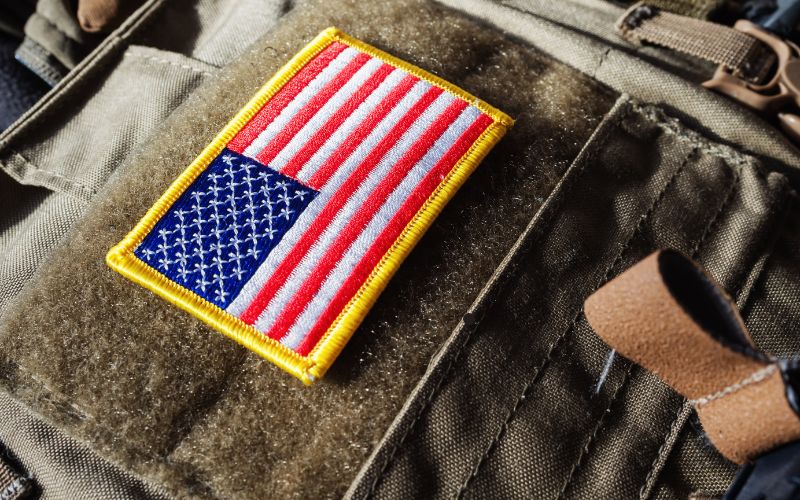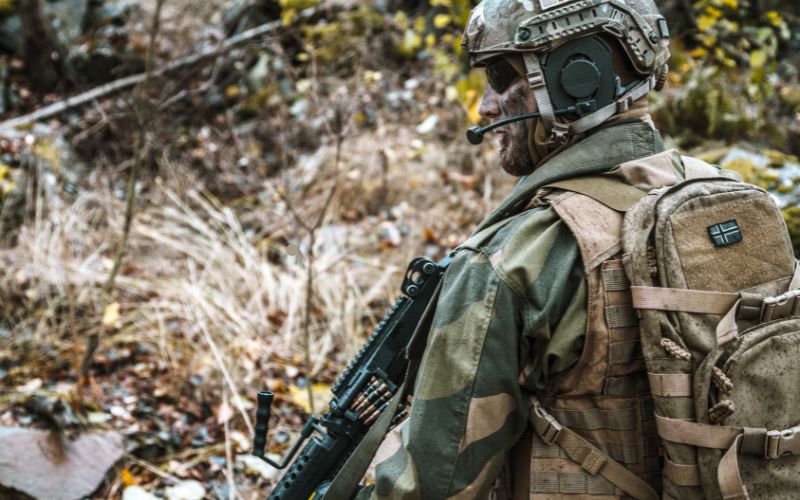Army Plate Carriers: Balancing Comfort, Mobility, and Protection

In the modern battlefield, where rapid maneuverability and robust protection are paramount, the army plate carrier has emerged as an indispensable component of tactical gear. Plate carriers are designed to protect soldiers against ballistic threats while allowing them to move with agility. They are a marvel of engineering that strikes a delicate balance between comfort, mobility, and protection.
Let’s examine the key features that make army plate carriers essential for military personnel and how advancements in design and functionality have enhanced their effectiveness.
Evolution Of Plate Carriers
Traditionally, body armor has been an item that was bulky, heavy, and sometimes even restricted the mobility of soldiers in dynamic combat environments. Modern plate carriers are the result of design and material innovation, offering a combination of features tailored to the needs of today’s armed forces.
Modern plate carriers are made from advanced materials such as high-strength polyethylene and aramid fibers, which reduce weight without sacrificing ballistic resistance. Most carriers now come with modular attachments, such as MOLLE (Modular Lightweight Load-carrying Equipment) systems, which allow soldiers to customize their setup according to the mission’s requirements. Enhanced padding, adjustable straps, and breathable fabrics ensure better weight distribution and comfort even during extended use.
Key Features of Modern Army Plate Carriers
Modern plate carriers are products of widespread design creativity and battlefield experience. They are designed to be versatile and provide mission-specialized adaptability. The following are some of the most important features that distinguish them.
1. Balancing Protection and Mobility Of the Army Plate Carrier

At its core, a plate carrier is designed to protect the wearer from ballistic threats. However, too much weight or bulk can prevent a soldier from performing critical tasks. Modern plate carriers strike a balance between ballistic protection, lightweight materials, and streamlined designs, enabling soldiers to move, run, and engage in tactical maneuvers without being weighed down.
To achieve this balance, designers focus on lightweight yet highly durable ballistic plates. These are typically made from advanced ceramics or composite materials that protect against high-velocity rounds and shrapnel. The carrier is also built from fabrics like 500D or 1000D nylon, which will resist wear and tear but remain light and flexible. The ergonomic features also contribute to mobility.
2. Comfort As A Key Priority For Army Plate Carrier
Comfort is not a luxury; it is a necessity. Poor plate carrier design can lead to fatigue, inefficiency, and long-term injuries. Manufacturers prioritize comfort, allowing soldiers to focus on the mission without being distracted by discomfort.
High-density foam or gel padding reduces pressure points and absorbs shock, particularly during intense physical exertion. The proper design of the carriers facilitates an even distribution of weight over the shoulders and torso rather than putting strain on certain areas. Most carriers have adjustable dimensions, providing a fit tailored to individual soldiers’ needs.
3. Modularity and Adaptability Of the Army Plate Carrier
One of the most important features of modern plate carriers is modularity. Soldiers operate in various environments, from urban combat to rugged terrain, and their equipment must be equally adaptable. A plate carrier’s MOLLE or PALS webbing allows pouches, holsters, and other accessories to be attached, allowing the user to tailor their setup to specific mission requirements.
Attachments may include ammo pouches, med kits, hydration systems, and communication gear. This adaptability ensures soldiers carry the essentials without compromising mobility or overloading their plate carriers. For example, in urban environments, they may prioritize compact setups with extra ammo pouches, while in remote areas, hydration systems and survival kits are prioritized.
4. Durability And Maintenance Of Army Plate Carrier

The carriers are exposed to mud, water, and abrasions, so their design focuses on durability. High-quality carriers are made from strong materials, such as 500D or 1000D nylon, which exhibit minimal wear and tear while remaining lightweight.
Regular cleaning is essential for maintaining durability, as dirt and debris can cause fabric degradation. Following each use, soldiers should check their plate carriers for tears in the fabric, frayed straps, or damaged plates. Properly storing these items in a dry, cool environment can prevent mold and material weakening. Ballistic plates should be periodically inspected for cracks or other forms of wear.
Most manufacturers provide recommendations on extending the life of a plate carrier, in addition to routine maintenance. These include avoiding excessive exposure to direct sunlight, refraining from using harsh chemicals for cleaning, and replacing worn straps or buckles.
5. Color and Size Variety
The vest market today offers a wide range of sizes and colors to choose from. Multicam for stealth, wolf grey for clandestine operations, or black for SWATs and Law enforcement officers, there’s a plate carrier for every application. Size counts, too—custom-fit vests reduce weight distribution and improve the feel.
Plate Carrier Features That Enhance Your Performance
Plate carriers are not merely for carrying armor; they are sophisticated platforms for mission effectiveness. An excellent carrier combines a few subtle yet important features that can significantly enhance your performance, safety, and longevity.
1. Quick-Release Mechanisms
Modern plate carriers often feature rapid-release buckles or cable-pull designs. They enable users to drop the vest in case of emergencies, such as when wounded, underwater, or in a vehicle fire. This is particularly coveted in combat situations and by police officers during high-risk operations.
2. Integrated Admin Panels
Integrated admin pouches provide a means of transporting mission-critical, small tools, such as pens, notebooks, compasses, maps, and IDs. They minimize the need for additional pouches and organize gear access.
3. Cable Management Channels
For those wearing radios, hydration packs, or night vision gear, internal cable routing keeps exposed cables from snagging on objects, thus enhancing mobility and minimizing clutter.
4. Adjustable Sizing and Fit
Search for carriers such as the Chase Tactical low-vis plate carrier that have adjustable shoulder straps, cummerbunds, and load-bearing panels. This enables the same model to accommodate multiple body sizes and keep armor plates closely fitted and properly aligned, ensuring coverage of life-saving organs.
5. Plate Compatibility and Placement
Armor plates vary. Check your carrier accommodates the type (SAPI, ESAPI, or swimmer-cut) and quantity (front, back, side) of plates you will be using. Inadequate plate placement will undermine protection.
6. Lightweight & Breathable Design
Carriers with mesh ventilation panels or laser-cut fabrics provide airflow and prevent sweat accumulation. This is particularly crucial in tropical environments or extended-duration missions.
7. MOLLE Webbing for Modularity
A MOLLE platform allows you to strap on mission-dependent gear, such as mag pouches, medical pouches, grenades, radio pouches, or even small packs. This turns your plate carrier into an ultra-modular platform.
Future Trends In The Design Of Plate Carriers
Future trends in the plate carrier include integration with smart technology, such as built-in sensors to monitor vital signs or provide situational awareness for defense. Researchers might discover ultra-light and ultra-strong materials, meaning carriers can protect more without adding extra weight.
Future designs of tactical gear may also incorporate materials that adapt to temperature changes, offering cooling in hot climates and insulation in cold environments. Plate carriers can be integrated with lightweight exoskeleton systems to reduce the load on soldiers further, thereby enhancing their endurance and strength.
These innovations represent the next frontier in tactical gear, transforming plate carriers into multifunctional systems beyond traditional protection.
Choosing The Right Plate Carrier
Selecting the right plate carrier for soldiers is a crucial decision. The following should be considered:
Mission Requirements: Each mission requires different degrees of protection, security, and load-carrying capacity.
Environment: The carrier may need to be more ventilated for hot environments, while cold environments may require additional insulation.
Fit and Adjustability: The better the plate carrier fits, the greater the mobility and comfort.
Budget: Cost should not be an overriding factor when quality and protection are compromised.
Conclusion
Army plate carriers are not only protective gear; they are the trusted companion of a soldier in the field. Modern plate carriers offer the perfect trifecta of comfort, mobility, and protection by combining cutting-edge materials, ergonomic designs, and modular functionality. As warfare demands continue to evolve, so too will the innovations that make plate carriers an essential tool for those on the front lines.
Frequently Asked Questions
What Is the Acronym for Army Plate Carrier?
The acronym for the Army plate carrier is SPCS. When choosing Plate Carrier Options, consider the following factors: Army Regulations, Tactical Gear needs, Body Armor, Military Standards, Personal Preference, Weight Distribution, Material Durability, Combat Readiness, and Plate Carrier Accessories.
What Plate Carrier Do US Special Forces Use?
Do you wonder what plate carrier the US Special Forces employ? They use tactical gear like Crye Precision JPC, LBT 6094, and Ferro Concepts Slickster. It is high-quality military equipment offering custom-fit body armor plates, which are more crucial for combat and secret missions.
Do You Get to Wear Your Plate Carrier in the Army?
Yes, you can wear your custom plate carrier in the Army, but you must ensure it meets regulatory compliance. Consider comfort concerns, mobility issues, protection levels, fit restrictions, brand preferences, cost considerations, and necessary size adjustments.

